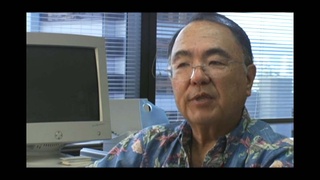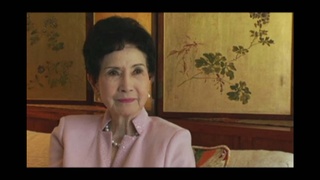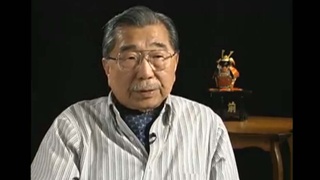Interviews
Being Confused about Racial Identity in Postwar United States
You’re – I’m American, but I was – for years, you know, you wonder. I remember when I got out of camp, then I – when I was going off to school, still, even though it was a few years after – and then I went down South, I didn’t know at first, “Which bathroom am I supposed to go into?” One is for “White,” one is for “Black,” and I thought, “I’m not white, I’m not black, but, you know, during the war, I’m Japanese, I was put into camp. Maybe I should go into the black one.” It was – I don’t remember which one I went into. I know that it was – every time I saw that, I thought, “I really don’t know which one I’m really supposed to go into.”
Date: November 8, 2018
Location: California, US
Interviewer: June Berk
Contributed by: Watase Media Arts Center, Japanese American National Museum
Explore More Videos

Positive experiences with Asian Americans for Action
(1924-2018) Researcher, Activist

Being an American soldier and an "enemy alien"
(1923-2011) Lawyer, MIS veteran, founder of Francis and Sarah Sogi Foundation

Not relating to Japan Americans' experiences on the mainland
(1923-2011) Lawyer, MIS veteran, founder of Francis and Sarah Sogi Foundation


Father interrogated by FBI, but not taken away
(1925 - 2018) Nisei educator from Hawai‘i

The political effects on Nikkei during the war (Spanish)
(b. 1950) Nisei Chilean, Businessman

Government sold Japanese Canadian properties for little money
(b. 1928) Doctor. Former Chair of the Japanese Canadian Redress Foundation.

Questioning Curfew
(1918-2012) Fought the constitutionality of Executive Order 9066.

Challenges of finding a summer job
Judge, only Japanese American to serve on CWRIC.



Traumatic experiences before camp
(1913-2013) Doctor specializing in obstetrics in Southern California

“Everybody went in like sheep”
(1913-2013) Doctor specializing in obstetrics in Southern California

Postwar school-life
(b. 1930) Half Japanese and grew up in both Japan and the United States.

